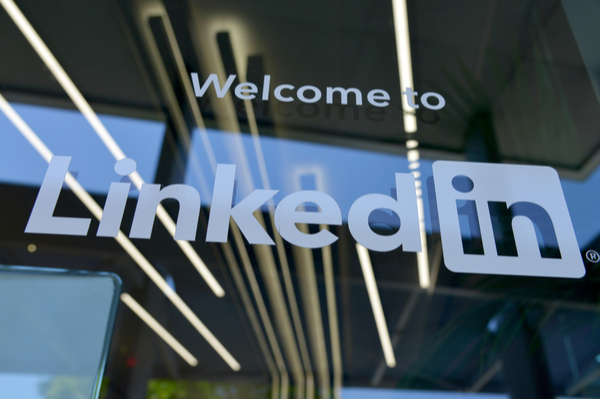LinkedIn’s director shares five tips to make your profile stand out
Tuesday 21 April 2020
Janine Chamberlin, Director at LinkedIn
Your LinkedIn profile is a digital representation of your professional brand. Simply put, the more complete your profile, the better the odds that recruiters and potential employers will find you. A robust profile can be your ticket to a variety of new professional opportunities such as jobs, partnerships,mentorships, learning opportunities, networking, volunteering or new business.
You should treat your LinkedIn profile as an online portfolio - somewhere that recruiters and potential employers can get a feel for your unique skills, talents and goals, get a glimpse into your career highlights and also see your back-log of work in one place.
More than a third (36%) of talent professionals use skills information to find candidates, and a similar number will also look at your current company and location to match to a potential employer, so keeping these up to date will help you land relevant opportunities.
“Personal brand” is a phrase that gets used a lot, but all it really means is presenting your work and achievements in a way that feels true to you. Rather than worrying about what you feel you should be putting on your LinkedIn profile, use it to show a bit of your personality - while of course keeping it professional.
A good place to start is to think about five or six words that you think your colleagues would use to describe you, and use that as a filter when deciding what to post. For example, if you like to stay on top of industry news, you could share interesting articles, accompanied by a summary of your take on the topic.
Our top tips are:
Picture perfect. Start with a photo. Did you know that LinkedIn members with a profile photo have 21 times more views and up to 9 times more connection requests than members who don’t have one? If you need some help getting the best picture, this short video on how to make a great profile shows you the small edits you can make to show you in your best professional light.
Personalise your page. Your name, headline and job title are the first things recruiters and potential employers will see, so this should reflect who you really are. Don’t forget to keep all your experience up to date as you never know what might be the one thing that gets you your next job offer. Including a short summary of your background and highlighting your key skills will help recruiters to search for you on the platform. Using Open Candidates you can also privately signal to recruiters that you are open to new opportunities.
Tell your network what you’ve been up to. Status updates are an easy way to update your network on the projects you’ve been working on and the industry topics you’re interested in, providing a snapshot into your professional life. By regularly sharing your opinions and things that interest you, like an engaging video or article, it’s a great way to stay connected with your professional community. Make sure your position and industry are current, as listing these can help you connect to jobs, content, and groups you may be interested in. Don’t forget about location -- it can help you be discovered up to 23x more in searches by alumni, recruiters, former colleagues, and others.
Skills and Endorsements. If you list more than five skills on your profile, you’re 27 times more likely to be discovered in searches by recruiters. Don’t be afraid to show these off so employers will get a great idea of how you work, and which roles might be right for you. Premium members also get access to hundreds of Learning courses to keep skills up to date.
Know what you’re worth. LinkedIn is great for networking, but you can also use it to benchmark your salary. LinkedIn’s Salary Tool uses salary data from LinkedIn’s 675+ million members, so you can compare what you’re earning to your peers, as well as being able to see what the potential earning is in that new role you’re interested in!
Last Friday, we hosted a live webinar with Ann Francke that explored how to job hunt during a crisis. You can watch it back here.
Why not check out our Leading Through Uncertainty hub for more Covid-19 related content?
Filling in the Gaps Report
This research highlights the ongoing challenges in closing the gender pay gap.
“As managers, we can help improve the UK economy”
Simon Takel CMgr FCMI on how CMI resources help him navigate change in the further education sector
Giving Engineering Students a Competitive Edge
Discover how Newcastle College’s CMI Dual Accredited Engineering Management degree empowers future engineering leaders.
Pink suits and ice-breakers: what we learned at CMI Communities Live, Birmingham
Experts gathered in the West Midlands to share their ideas for future-proofing leadership
Advice
Looking for advice and guidance? Whether you are looking for topical tips or information, you can find the latest advice and guidance from the CMI team here.
Members See More
CMI Members have access to thousands of online learning and CPD resources. Learn more about our membership benefits
Join The Community
CMI offers a variety of flexible membership solutions, tailored to your needs. Find out more and get involved in the CMI community today.
